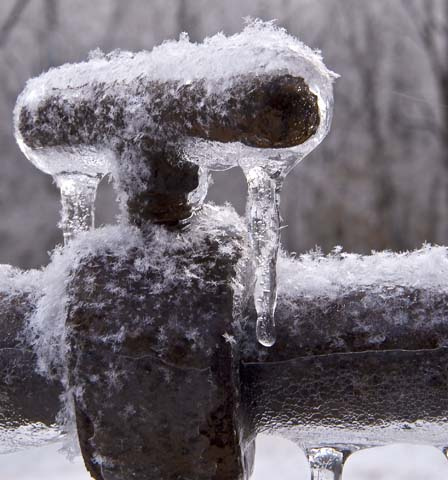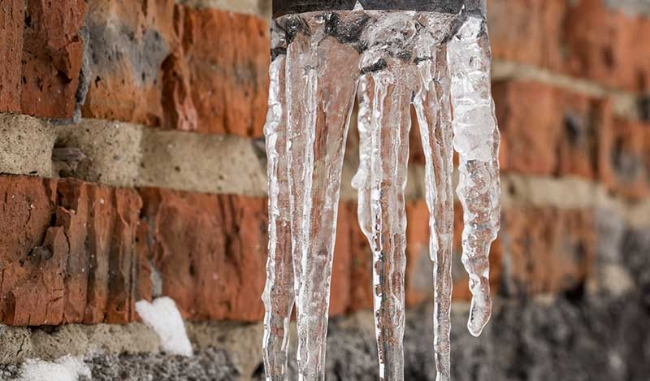Protecting Your Pipes from Freezing: Best Methods
Protecting Your Pipes from Freezing: Best Methods
Blog Article
What are your concepts on How to Prevent Your Pipes From Freezing?

Winter can damage your plumbing, especially by freezing pipes. Here's how to prevent it from happening and what to do if it does.
Intro
As temperature levels decrease, the danger of frozen pipelines boosts, potentially leading to pricey repair services and water damage. Understanding just how to avoid frozen pipelines is important for property owners in cool climates.
Avoidance Tips
Protecting vulnerable pipelines
Cover pipes in insulation sleeves or make use of heat tape to shield them from freezing temperatures. Concentrate on pipes in unheated or outside locations of the home.
Heating strategies
Maintain interior spaces adequately heated up, especially areas with pipes. Open up cupboard doors to permit warm air to distribute around pipes under sinks.
Exactly how to determine frozen pipes
Seek lowered water circulation from taps, uncommon odors or noises from pipes, and visible frost on subjected pipelines.
Long-Term Solutions
Structural changes
Think about rerouting pipelines far from outside walls or unheated areas. Add extra insulation to attics, cellars, and crawl spaces.
Updating insulation
Purchase high-quality insulation for pipelines, attics, and walls. Correct insulation aids preserve consistent temperature levels and lowers the danger of frozen pipelines.
Safeguarding Outdoor Pipes
Garden tubes and outside taps
Detach and drain garden hoses before winter. Set up frost-proof spigots or cover outside faucets with insulated caps.
Recognizing Frozen Pipes
What creates pipes to freeze?
Pipelines ice up when exposed to temperatures listed below 32 ° F (0 ° C) for expanded periods. As water inside the pipes freezes, it increases, putting pressure on the pipeline wall surfaces and potentially triggering them to break.
Dangers and problems
Frozen pipelines can result in supply of water disruptions, residential or commercial property damages, and costly repair services. Burst pipes can flood homes and trigger extensive structural damage.
Signs of Frozen Water Lines
Identifying frozen pipes early can stop them from breaking.
What to Do If Your Pipelines Freeze
Immediate activities to take
If you believe frozen pipes, maintain faucets open to alleviate stress as the ice thaws. Use a hairdryer or towels taken in warm water to thaw pipes gradually.
Conclusion
Protecting against icy pipelines needs aggressive procedures and quick actions. By understanding the causes, indicators, and preventive measures, home owners can safeguard their pipes throughout cold weather.
6 Proven Ways to Prevent Frozen Pipes and Protect Your Home
Disconnect and Drain Garden Hoses
Before winter arrives, start by disconnecting your garden hoses and draining any remaining water. Close the shut-off valves that supply outdoor hose bibs and leave the outdoor faucet open to allow any residual water to drain. For extra protection, consider using faucet covers throughout the colder months. It’s also important to drain water from any sprinkler supply lines following the manufacturer’s directions.
Insulate Exposed Pipes
Insulating your pipes is an effective way to prevent freezing. Pipe insulation is readily available at home improvement stores and is relatively inexpensive. Pay close attention to pipes in unheated areas such as the attic, basement, crawl spaces, or garage. Apply foam insulation generously to create a buffer against the cold. You can also wrap your pipes in heat tape or thermostat-controlled heat cables for added warmth.
Seal Air Leaks
Inspect your home for any cracks or openings that could let in cold air. Seal any holes around the piping in interior or exterior walls, as well as the sill plates where your home rests on its foundation. Additionally, make sure to keep your garage door closed unless you’re entering or exiting. Leaving it open creates a significant air leak that can lead to frozen pipes.
Allow Warm Air Circulation
During cold snaps, it’s essential to allow warm air to circulate evenly throughout your home. Leave interior doors ajar to promote better airflow. Open kitchen and bathroom cabinets to help distribute heat consistently around the rooms. If you have small children or pets, be sure to remove any household chemicals or potentially harmful cleaners from open cabinets for safety.
Let Faucets Drip
A small trickle of water can make a big difference in preventing ice formation inside your pipes. When temperatures drop significantly, start a drip of water from all faucets served by exposed pipes. This continuous flow helps prevent the water from freezing. Additionally, running a few faucets slightly can relieve pressure inside the pipes, reducing the chances of a rupture if the water inside does freeze.
https://choateshvac.com/6-proven-ways-to-prevent-frozen-pipes-and-protect-your-home/

I hope you enjoyed reading our topic on 6 Ways to Prevent Frozen Pipes. Thank you for taking the time to browse our piece of content. You should take the time to distribute this entry if you enjoyed reading it. Thanks a lot for your time invested reading it.
Contact Report this page